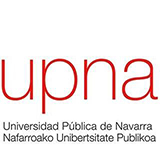Detailed introduction of the Public University of Navarre:
Introduction and Overview
Geographical location: The main campus is located in the suburbs of Pamplona, Navarra Autonomous Region in northeastern Spain, close to the El Sadar Stadium, the home of Osasuna Football Club. In addition, there is a branch campus in Tudela.
Student size: In 2022-2023, the total number of students is about 10,000, including 7,814 undergraduates, 869 postgraduates, and 505 doctoral students.
International students: International students account for about 7%.
History and establishment time
The Public University of Navarre was founded by the Government of the Autonomous Region of Navarre on April 21, 1987. In 1989, classes began in the El Sarrio Building and the construction of the main campus teaching building was started. In 1990, the library and department buildings were built. In 1993, the first president was elected. In 1996, the number of registered students reached 10,000. In 2008, the number of registered students reached 10,000. The Tudela campus was completed and put into use in 2017.
School Strength
Teaching Resources: It has complete teaching facilities, including modern classrooms, laboratories, libraries, etc., providing students with a good learning environment.
Teaching Staff: In 2022-2023, there are 1,064 academic staff, 505 administrative staff, and a total of 1,569 faculty and staff.
Course Setting: It offers 25 undergraduate majors, 7 dual-degree undergraduate majors, and more than 30 graduate majors, covering economics, law, humanities, social sciences, health sciences, engineering and other fields.
Institutional Nature
A public university in Spain.
Educational Philosophy
Committed to spreading excellent human culture, improving students' reform and enterprising awareness, focusing on accumulation and providing methods that combine theory with practice, criticism and knowledge innovation, encouraging innovation of intellectual resources, and developing professional practical skills of talents.
Key Laboratories and Disciplines
Key Disciplines: The school has a wide range of disciplines, and some disciplines have high rankings and influence in Spain, such as in 2025 In the Times Higher Education World University Rankings 2018, life sciences, education, business and economics, clinical and health, computer science, engineering, physical sciences and other disciplines are all on the list, among which life sciences are ranked 501-600, education is ranked 501-600, business and economics are ranked 601-800, clinical and health are ranked 601-800, computer science is ranked 601-800, engineering is ranked 801-1000, and physical sciences are ranked 801-1000. =Position.
Key Laboratory: There are several professional research centers, such as Smart City Research Institute, Advanced Materials and Mathematics Research Institute, Food Chain Innovation and Sustainable Development Research Institute, Multidisciplinary Institute of Applied Biology, Advanced Social Research Institute, etc.
Department Settings
Department of Economics and Business Sciences: Offers majors such as Business Administration and Economics.
Department of Humanities and Social Sciences: Covers majors such as History and Heritage, Early Childhood Education, Primary Education, Applied Sociology, Social Work, etc.
Department of Judicial Sciences: Offers majors such as Law, Labor Relations and Human Resources.
Department of Health Sciences: Includes majors such as Nursing, Physical Therapy, Medicine, and Psychology.
Higher Agricultural Engineering and Technology College: Offers majors such as Biotechnology and Agricultural Food Environmental Engineering.
Higher Industrial and Telecommunications Engineering and Technology College: Offers majors such as Biomedical Engineering, Electronic Engineering, and Computer Engineering.
Ranking
Ranked 280th in the 2024 QS World University Rankings.
Ranked 1001-1200th in the 2025 Times Higher Education World University Rankings.
Expenses
Tuition: Undergraduate Business Administration tuition is approximately 2,200 Euros / Year.
Scholarships: The school offers a variety of scholarships and grants to help outstanding students and students in financial difficulties reduce the tuition burden, such as scholarships based on students' grades, academic performance, family financial status and other factors.
Campus Environment
Main Campus in Pamplona: Called Arosadia Campus, it was designed by Francisco Javier Saenz de Oiza and covers an area of 26 hectares. The campus has teaching buildings, libraries, seven department buildings, administrative and management buildings, workshops and laboratories, cafes, restaurants, etc. The campus is surrounded by pleasant scenery, with open land and the Sada River, with dense poplar trees planted on the riverside.
Tudela Campus: Located in Tudela, it was put into use in 2008 and offers teaching of physical therapy degrees and mechanical design engineering degrees. Campus facilities include teaching buildings, libraries, physical therapy and engineering buildings, etc.
-
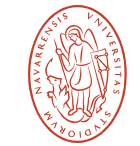
University of Navarra
-

Autonomous University of Madrid
-

Polytechnic University of Catalonia
-

CEU University of San Pablo
-
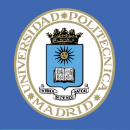
Technical University of Madrid
-

University of Lleida
-
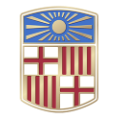
University of Barcelona
-

University of Oviedo
-
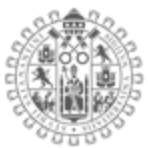
University of Salamanca
-

University of Valladolid
-

Mesoamerican University
-

Istmo University
-

Mariano Galvez University of Guatemala
-

Regional University of Guatemala
-

Galileo University
-

Francisco Marroquín University
-

Rafael Landívar University
-

University of the Valley of Guatemala
-

University of San Carlos of Guatemala
-

Technological Institute of Tlaxcala Plateau
-

Golfo University
-

Technological University of South Sonora
-

Technological University of Huejotzingo
-

Tizimín Institute of Technology
-

Chilpancingo Institute of Technology

